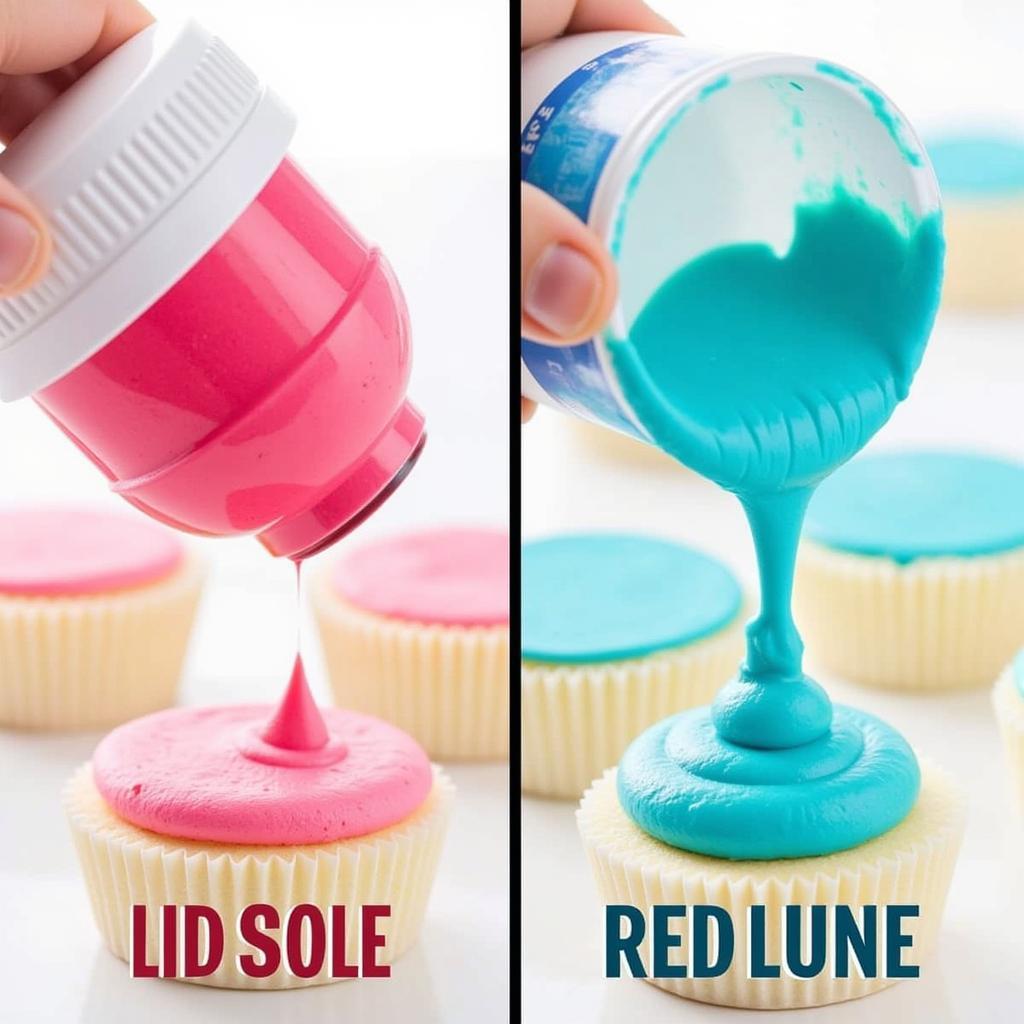Gel food coloring is a popular choice for vibrant, concentrated color in baking and decorating. But is it oil-based? This comprehensive guide will explore the composition of gel food coloring, compare it to other types of food coloring, and address common misconceptions. We’ll delve into its uses, advantages, and limitations to help you make informed decisions for your culinary creations.
Understanding Gel Food Coloring Composition
Gel food coloring’s thick consistency often leads to the question: is gel food coloring oil based? The answer is generally no. Unlike oil-based food colorings, which dissolve in fats and oils, gel food coloring is typically water-based. Its viscosity comes from the addition of thickening agents, such as glycerin or corn syrup, to a water base containing color pigments. This gives it a concentrated, gel-like texture that disperses easily in water-based mixtures like batter, frosting, and dough, but not so well in oil-based mediums.
Comparing Gel, Liquid, and Powdered Food Colorings
Understanding the differences between various food coloring types helps determine their suitability for different applications. Liquid food coloring, a common household staple, is also water-based but significantly less concentrated than gel. Powdered food coloring offers concentrated color in a dry form, requiring careful measurement and mixing. You can learn more about using food coloring in different ways at how to make blue popcorn with food coloring. Oil-based food colorings, less common for home use, are specifically designed for fatty mediums like chocolate and candy melts.
What is the Difference Between Gel and Liquid Food Coloring?
Gel food coloring provides a more intense color payoff compared to liquid food coloring, making it ideal for vibrant hues.
What About Powdered Food Coloring?
Powdered food coloring, while concentrated, can be more challenging to incorporate evenly compared to gel or liquid forms.
Advantages of Using Gel Food Coloring
Gel food coloring offers several advantages. Its concentration allows for vibrant colors without significantly altering the consistency of your recipe. It’s less likely to cause bleeding or streaking, especially in frosting and fondant. If you’re wondering about potential staining issues, check out this helpful resource: will food coloring stain a toilet bowl. Moreover, the gel format makes it easy to control the amount of color added, ensuring precise results.
 Advantages of Gel Food Coloring in Baking
Advantages of Gel Food Coloring in Baking
Where to Find Oil-Based Food Coloring
While gel food coloring isn’t oil-based, knowing where to source oil-based options can be beneficial for certain projects. Specialized baking supply stores or online retailers are good places to start. For a more detailed guide, visit where to buy oil based food coloring. Understanding the distinction between gel and oil-based colorings is crucial for achieving desired results.
Is Gel Food Coloring Suitable for All Applications?
While versatile, gel food coloring isn’t ideal for every situation. It may not disperse well in oil-based mixtures like candy melts or some types of buttercream. For projects like slime making, its thickness may also pose a challenge. For more information on using food coloring with slime, you can refer to this article: does gel food coloring work for slime. In such cases, liquid or oil-based food coloring may be more appropriate.
“Understanding the nuances of each type of food coloring empowers you to achieve precise and vibrant results in your culinary creations,” says renowned pastry chef, Amelia Dubois. “Gel food coloring is undoubtedly a valuable asset, but knowing its limitations and alternatives is equally crucial.”
 Gel Food Coloring Applications: Best Practices
Gel Food Coloring Applications: Best Practices
Cleaning Up After Using Food Coloring
Accidental spills and stains are common when working with food coloring. While gel food coloring is water-based, it can still stain skin temporarily. For tips on removing food coloring stains, check out this helpful guide: how to remove food coloring from skin.
In conclusion, gel food coloring is a powerful tool for achieving vibrant, concentrated color in your culinary creations. While not oil-based, its water-based composition with added thickeners makes it ideal for a variety of applications, from baking to cake decorating. By understanding its properties and limitations, you can make the most of this versatile coloring agent.
FAQ
- Can I use gel food coloring in chocolate?
- What are the best brands of gel food coloring?
- How do I store gel food coloring?
- How much gel food coloring should I use?
- Can I mix different colors of gel food coloring?
- Is gel food coloring vegan?
- What is the shelf life of gel food coloring?
Need help with your color project? Contact us! Phone: 0373298888, Email: [email protected] or visit us at 86 Cau Giay, Hanoi. We have a 24/7 customer service team ready to assist you.

